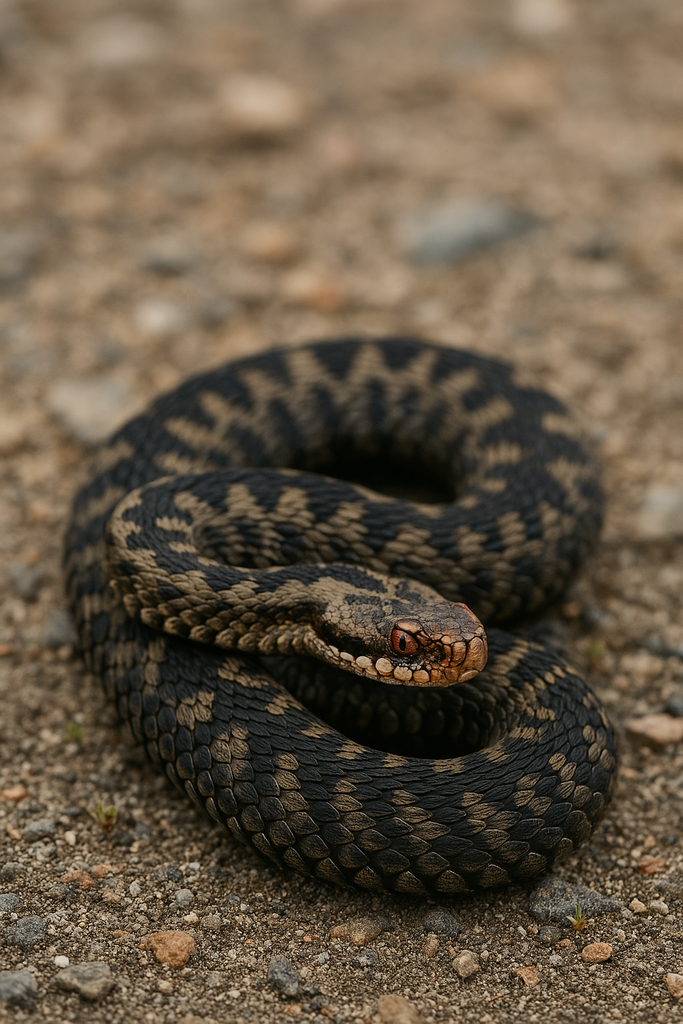Adder Bites in Dogs: What UK Dog Owners Need to Know
Last week, a peaceful dog walk turned into one of the most frightening experiences I’ve had as a pet owner.
My dog Rosie was bitten by an adder—the UK’s only native venomous snake—and needed emergency care. It was overwhelming and scary, but we were lucky. Thanks to quick action and an amazing vet team, she is now recovering well.
I wanted to share our experience along with some important information about adder bites in dogs. Hopefully, this post helps you feel more prepared should the unexpected ever happen.
🐍 What Is an Adder?
The adder (Vipera berus) is the UK’s only venomous snake.
They’re relatively shy and prefer to avoid humans, but they will bite if threatened—especially by a curious dog.
You’re most likely to encounter them in:
-
Heathlands
-
Moorlands
-
Woodland edges
-
Coastal paths
They’re most active from March to October, particularly on warm, sunny days when they come out to bask.
⚠️ How Do Dogs Get Bitten?
Dogs often get bitten when they accidentally disturb an adder while sniffing or exploring thick undergrowth. Most bites occur on the legs or face, especially if the dog tries to interact with the snake.
🩺 Symptoms of an Adder Bite in Dogs
Adder bites can be serious, and symptoms often appear quickly. Watch for:
-
Sudden yelping or limping
-
Swelling at the bite site (usually legs or face)
-
Lethargy or weakness
-
Vomiting or panting
-
Signs of shock in severe cases
In our case: Rosie yelped and ran over to us with blood running down her face and two clear puncture wounds visible on her face.
🆘 What to Do If Your Dog Is Bitten
-
Stay calm – dogs pick up on our stress.
-
Keep your dog still and calm – carry them if possible to prevent the venom spreading quickly.
-
Call your vet immediately – let them know you’re coming and that you suspect an adder bite. Ask if they have anti venom in stock and if not find a vet that does have it and go there instead. Time is very important.
-
Do not apply ice, suck the venom, or use a tourniquet.
Veterinary treatment may include pain relief, fluids, anti-inflammatories, and in most cases, antivenom.
🐾 Preventing Adder Bites
While you can’t avoid every risk on a walk, there are steps you can take to reduce the chance of a bite:
-
Keep to clear paths, especially in known adder habitats.
-
Avoid letting your dog roam off-lead in thick undergrowth.
-
Be especially cautious in spring and summer.
- Consider adding a bell to your dogs collars, the sound will send adders slithering away.
-
Familiarise yourself with your nearest emergency vet—just in case. If on holiday this is especially important.
💛 A Personal Note
I wouldn’t wish the panic of that day on anyone—but I’m sharing this in the hope it helps another dog owner feel just a bit more prepared. Adder bites are rare, but they can be serious. Knowing what to look for and how to act quickly really does make a difference.
If you’ve had an experience with adders or have questions about anything I’ve shared, I’d love to hear from you. Drop a comment below or get in touch.
Stay safe out there—and give your dog a cuddle from us


Leave a comment